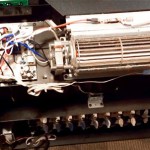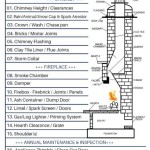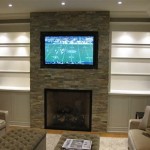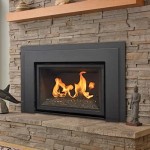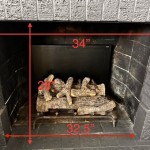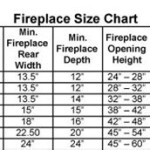Removing an Old Brick Fireplace Surround: A Comprehensive Guide
Removing an old brick fireplace surround is a common home renovation project undertaken for various reasons. These can range from updating the aesthetic of a room to addressing structural issues related to the surround itself. The process, while potentially physically demanding, can be accomplished by a homeowner with a reasonable degree of skill and the proper tools. This article provides a detailed guide to safely and effectively removing an old brick fireplace surround.
Before initiating any demolition work, a thorough assessment of the fireplace and surrounding area is crucial. The assessment should focus on identifying potential hazards, determining the type of mortar used, and understanding the overall construction of the fireplace. Neglecting this initial evaluation can lead to unexpected complications and potential damage to the surrounding structure.
Safety is paramount throughout the entire removal process. Proper personal protective equipment (PPE) is essential to prevent injuries from flying debris, dust, and potential structural instability. Furthermore, measures should be taken to contain dust and debris, minimizing the impact on the rest of the home.
Key Point 1: Preparing the Workspace and Ensuring Safety
The initial step involves adequately preparing the workspace. This includes removing all flammable materials from the immediate vicinity of the fireplace. Furniture should be relocated or covered with protective sheeting to prevent dust and debris accumulation. Furthermore, any valuable items within the room should be safely stored away.
Safety gear is indispensable. Safety glasses or goggles are necessary to protect the eyes from flying mortar and brick fragments. A dust mask or respirator is essential to prevent inhalation of fine particles, particularly if the mortar contains asbestos (which is more likely in older homes). Work gloves will protect the hands from abrasions and cuts. Ear protection, such as earplugs or earmuffs, is recommended to mitigate the noise generated during the demolition process.
Dust control is a critical aspect of the preparation phase. Sealing off the room with plastic sheeting is highly recommended. This helps contain the dust and prevents it from spreading throughout the house. An alternative approach is to use a wet saw or spray the bricks with water before and during the demolition process to minimize dust generation. Consider placing a drop cloth or tarp on the floor in front of the fireplace to protect the flooring from debris and scratches. Regular sweeping and vacuuming during the removal can also help to control dust levels.
Before commencing any demolition, ensure the electricity to the area is turned off at the breaker box. This minimizes the risk of electric shock, especially if any electrical wiring is embedded within or near the fireplace surround. If you are unsure about the electrical wiring, consult a qualified electrician.
Key Point 2: The Removal Process – Step-by-Step
Once the workspace is prepared and safety measures are in place, the removal process can begin. This involves systematically removing the bricks and mortar, typically starting at the top of the surround and working downwards. The choice of tools will depend on the type and strength of the mortar.
For softer mortar, a cold chisel and hammer may be sufficient. Position the chisel at the joint between two bricks and strike it firmly with the hammer. The goal is to break the mortar bond without damaging the bricks themselves, especially if you intend to reuse them. Work along the mortar joints, gradually loosening the bricks. Patience and controlled force are key to preventing damage to the bricks and the surrounding walls.
For harder, more stubborn mortar, a masonry chisel and hammer or a small demolition hammer (also known as a chipping hammer) may be required. A demolition hammer provides more power and can break through tough mortar more efficiently. However, exercise caution when using a demolition hammer, as it can easily damage the bricks if not used carefully. Start with low power settings and gradually increase the force as needed.
As the bricks are loosened, carefully remove them and place them in a designated area. Avoid dropping the bricks, as this can create dust and potentially damage the bricks themselves or the surrounding surfaces. If you are planning to reuse the bricks, clean them thoroughly to remove any remaining mortar. A wire brush or a brick hammer can be used for this purpose.
Continue working downwards, removing the bricks and mortar in a systematic manner. Periodically check the stability of the remaining structure. If you encounter any signs of instability, such as loose bricks or cracking mortar, take immediate steps to reinforce the structure before proceeding further. This may involve temporarily supporting the surround with shoring or bracing.
During the removal process, you may encounter metal ties or fasteners that are embedded within the mortar. These ties are used to secure the brick surround to the underlying structure. Use metal cutters or a hacksaw to cut these ties as you encounter them. Ensure that the cut ends of the ties are flush with the surrounding surface to prevent injuries.
As you approach the base of the fireplace surround, exercise extra caution. The base may be integrated with the hearth or the floor. Carefully assess the construction and determine the best way to remove the remaining bricks without damaging the hearth or the floor. You may need to use a smaller chisel or a rotary tool to carefully remove the mortar around the base.
Key Point 3: Addressing Potential Issues and Post-Removal Considerations
Throughout the removal process, several potential issues may arise. One common issue is encountering asbestos in the mortar. Asbestos-containing materials were frequently used in construction prior to the 1980s. If you suspect that the mortar contains asbestos, stop work immediately and contact a qualified asbestos abatement professional. Disturbing asbestos-containing materials can release harmful fibers into the air, posing a serious health risk.
Another potential issue is encountering structural damage behind the brick surround. Once the surround is removed, you may discover cracks, water damage, or other structural problems in the underlying wall. These problems need to be addressed before proceeding with any further renovation work. Consult a qualified contractor or structural engineer to assess the damage and recommend appropriate repairs.
After the brick surround has been completely removed, clean up the area thoroughly. Remove all debris, dust, and mortar fragments. Sweep or vacuum the floor and wipe down any surrounding surfaces. Dispose of the debris properly, following local regulations for construction waste disposal. If you suspect that the debris contains asbestos, it must be disposed of according to strict asbestos abatement regulations.
Following the removal of the fireplace surround, you will need to determine the next steps for the fireplace area. This may involve installing a new fireplace surround, patching the wall, or completely renovating the fireplace. Before proceeding with any further work, ensure that the underlying structure is sound and that all necessary repairs have been completed.
Patching mortar joints is an important consideration if the bricks were partially embedded in the wall and you plan to leave it exposed. In this case, matching the existing mortar with a new mortar mix is essential for a seamless appearance. Use a tuckpointing trowel to carefully fill the gaps, ensuring the mortar is compacted to prevent future water damage. Allow the mortar to cure according to the manufacturer's instructions.
Consider consulting with a qualified contractor or designer to discuss your options for the fireplace area. They can provide valuable insights and recommendations based on your budget, style preferences, and the overall design of the room. A professional can also ensure that any new construction or renovation work is performed safely and according to building codes.
Finally, document the entire process with photographs. These photos can be helpful for future reference, especially if you are planning to sell the property. They can also serve as a record of the condition of the fireplace area before and after the removal of the brick surround.
Removing an old brick fireplace surround is a project that requires careful planning, attention to detail, and a commitment to safety. By following the steps outlined in this guide and taking the necessary precautions, homeowners can successfully complete this project and transform their fireplace area.

Removing A Brick Fireplace

Simple Ways To Remove A Brick Fireplace With S Wikihow

Fireplace Demolition Day The Handyman S Daughter

Removing Fireplace S Brick Facade Not So Hard

Simple Ways To Remove A Brick Fireplace With S Wikihow

Fireplace Demolition Day The Handyman S Daughter

Fireplace Removal 101 Cost Process Essential Tips 2024

Removed Brick Facade Fireplace We Need Help
How To Remove My Too Big Hearth Help Com Forums Home

Our Favorite Flip Or Flop Before And After Makeovers Brick Fireplace Remodel Hearth
Related Posts

